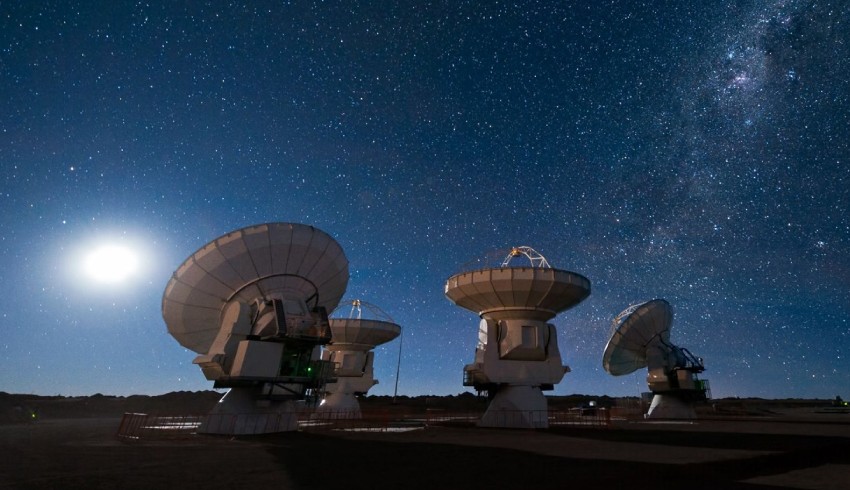It came from a galaxy a long, long, long way from Earth – in fact 3.6 billion light years distant. Since radio waves travel at the speed of light, that means that the event that caused this signal occurred 3.6 billion years ago.
As for identifying the actual source, the scientists did even better than narrowing it down to a single galaxy. They pinpointed the origin to a location around 13,000 light years from the galaxy’s centre.
Their findings have now been published in the journal Science, published by the American Association for the Advancement of Science.
Considering the astronomical distances involved, the location has been determined down to the equivalent of a city block when looking from the moon, said lead author, CSIRO astronomer Keith Bannister.
What the team detected is what’s termed a fast radio burst (FRB) that lasted 1.3 milliseconds – a bit over a thousandth of a second – and was picked up by the Australian Square Kilometre Array Pathfinder in WA on 24 September last year. They called this one FRB 180924.
Scientists now surmise that FRBs happen all the time but so far just 85 have been detected, the first in 2007 by a US astronomer in data collected by the Parkes telescope in NSW.
Why remains a big unknown.
"We just don't understand what kind of object in the universe can make radio waves that only last for a millisecond and that are so bright, because we think they come from literally halfway across the universe," Dr Bannister said.
"The second reason that they're really interesting is that when an FRB goes off, as it travels towards the Earth it actually picks up lots of information about the gas that it's travelling through on its way."
That gives a better idea of what’s actually there in interstellar space. So, how did they detect the location of the source at such an unimaginable distance?
That involved confirming the original observation and location using other radio telescopes in Hawaii and Chile.
“We report the interferometric localisation of the single pulse FRB 180924 to a position 4 kpc from the centre of a luminous galaxy at redshift 0.3214,” saidthe abstract of their report in Science.
“The burst has not been observed to repeat. The properties of the burst and its host are markedly different from the only other accurately localised FRB source. The integrated electron column density along the line of sight closely matches models of the intergalactic medium, indicating that some FRBs are clean probes of the baryonic component of the cosmic web.”
Scientists were initially sceptical that FRBs originated in distant space, suspecting their power indicated possible radio interference from Earth. As to their cause, there are various theories, including various natural phenomena.
"We cannot rule out completely the extraterrestrial hypothesis for the fast radio bursts in general," Vishal Gajjar, a researcher at the University of California-Berkeley, said in 2018.

